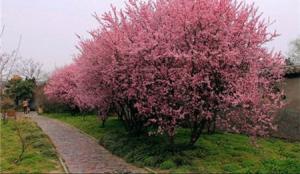How to Measure Plant Water Use
Plants have an important role in the environment and play key roles in maintaining the natural ecosystem. One of the primary factors that determine the growth of plants is water availability. Measuring plant water use is, therefore, important to improve our understanding of plant physiology and growth. This article explains the different methods used to measure plant water use.
Evapotranspiration Measurement
Evapotranspiration is one of the most common methods used to measure plant water use. This method involves measuring the amount of water lost through both transpiration (water vapor loss from leaves) and evaporation (water vapor loss from soil). The measurement of evapotranspiration is based on the difference between the amount of water present in the soil before and after the plant has transpired and evaporated water.
Water Potential Measurement
An alternative method to measure plant water use is to measure water potential. Water potential is the force that drives the flow of water through the plant. This method involves inserting a pressure probe into the soil and measuring the amount of water pressure required to extract water from the soil. The water potential can then be determined by calculating the pressure required to extract the water.
Sap Flow Measurement
Sap flow measurement is another method to measure plant water use. Sap flow is the movement of water through the plant's vascular system. This method involves drilling a hole into the tree trunk and inserting a probe into it. The probe measures the temperature changes in the sap flow, which is directly proportional to the water flow through the vascular system of the plant.
Stomatal Conductance Measurement
Stomatal conductance measurement is a method that measures the rate at which water vapor is exchanged between the plant and the atmosphere. This method involves placing a leaf in a humidity-controlled chamber and measuring the change in humidity inside the chamber. The rate of water vapor exchange is proportional to the stomatal conductance. The stomatal conductance is then used to estimate plant water use.
Conclusions
Different methods can be used to measure plant water use, as described in this article. It is important to choose the appropriate method based on the type of plant, research objectives, and resources available. By measuring plant water use, we can better understand plant physiology and growth and help to conserve natural resources and improve agricultural practices.

 how many times do yo...
how many times do yo... how many planted tre...
how many planted tre... how many pine trees ...
how many pine trees ... how many pecan trees...
how many pecan trees... how many plants comp...
how many plants comp... how many plants can ...
how many plants can ... how many plants and ...
how many plants and ... how many pepper plan...
how many pepper plan...






























